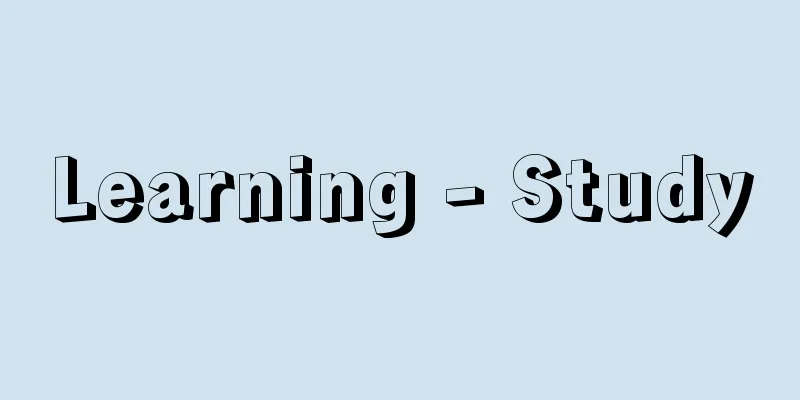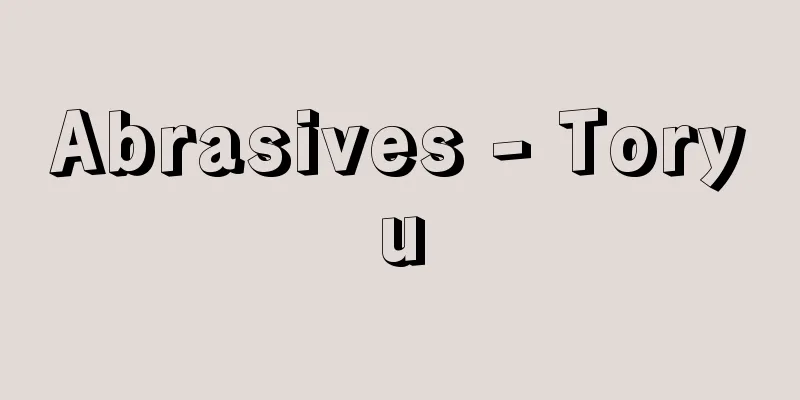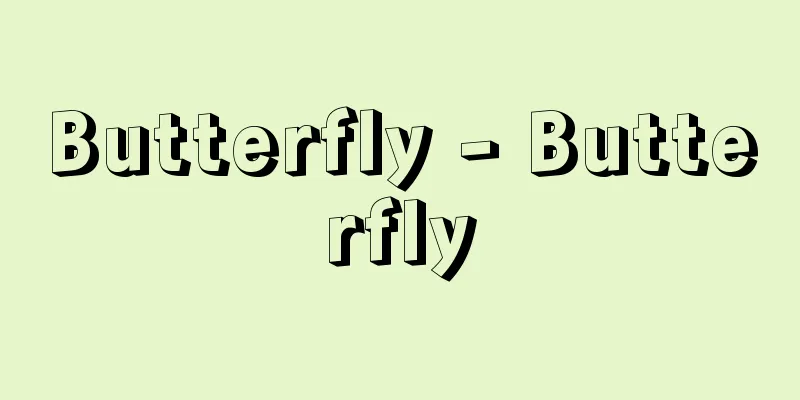Learning - Study

|
When behavior changes relatively sustainably and becomes stable through repeated experience, and has an effect on subsequent behavior, it is distinct from general adaptation of the organism to changes in the environment, and from behavioral changes resulting from physical fatigue, injury, disease, temporary motivation, etc. It is also distinct from age-related and developmental changes in behavior that accompany growth, and from aging, but in specific cases, it is difficult to determine unequivocally whether a behavior is the result of learning or growth. Learning is not limited to studying school subjects, but extends broadly to all aspects of life. Learning does not necessarily result in improvements in behavior in the common sense sense; in a broad sense, smoking and drinking habits and social prejudices also arise as the result of learning. When a learned behavior is stable and sustained, it is called a habit, but while the stability of behavior is appropriate for smooth progression, it is often prone to persist in the face of changes in the environment, and this is called a habit. When a behavior is repeated with the aim of improving a particular task, it is called practice, and the behavior achieved as a result of practice is called mastery. [Takashi Ogawa] Mechanism of learningLearning has an acquisition aspect (learning in the narrow sense), where appropriate behavior is demonstrated in new situations, and an aspect of memory, which is the basis for maintaining and reproducing acquired behavior. A distinction is also sometimes made between the acquisition of behavior and performance. When acquired behavior that is not put into practice has an effect on other behaviors later, this is sometimes called latent learning. An example of this is when you have an image of an area that you have become familiar with from a walk, and you can follow this image to find a specific point in that area, rather than when the area is unknown and you have no image of it. For learning to take place, cognition, motivation, attitude, emotion, and other factors have antecedent conditions, but what is important is the contingency between reinforcement (in the broad sense of the term in psychology) and the behavior. Positive reinforcement occurs when the results of a behavior match motivation and promote and maintain the behavior, while negative reinforcement occurs when the results do not match motivation and are suppressed or avoided. Learning is also affected by the amount of reinforcement and repetition of reinforcement, but this is more of an effect on execution, and for acquisition, the contingency between behavior and reinforcement and the time interval are important. Delays in reinforcement can be an opportunity to insert behavior other than the one to be acquired, preventing the acquisition of appropriate behavior. In the primarily cognitive aspect of learning, even if complex cognition is difficult to acquire when it is suddenly required, it can become easier by gradually moving from simple cognition to complex cognition. There is also a case where a young child who was unable to identify a triangle that stands on its base and a triangle that stands on its apex was able to identify them by gradually tilting one to match the other. Motivation is important for learning, and it has also been demonstrated that individuals with high achievement demands improve through repetition of behavior, but those with low demands do not. In psychology, the experimental method of conditioning, which utilizes the contingency between behavior and reinforcement, is widely used in learning research. [Takashi Ogawa] Basic facts of learningRepetition of an action is fundamental to the progression of learning, and this progress can be shown by a learning curve, which is a plot of the number of reactions, reaction volume, reaction time, etc. (vertical axis) against repeated trials (horizontal axis). For example, in learning to send and receive telegraphs, a learning curve is shown between the number of trials (time) and the number of words sent and received. There is a limit to the number of words per unit time, and progress up to that point is not uniform, and there is a period of stagnation, which is called a plateau. This is also seen as a period when the learner explores new ways of doing things, and in the case of telegraphing, for example, it corresponds to the stage where the learner moves from the initial task of selecting letters one by one to the task of selecting them as words or sentences. When learning attempts are repeated continuously, it is called massed learning, and when breaks are inserted in between, it is called distributed learning. In general, the latter is considered to have a higher learning efficiency than the former. When all learning materials are learned at once, it is called the whole method, and when they are divided into parts and learned sequentially, it is called the part method. Depending on the amount of learning material, the whole method can be effective when the material is related. After learning is established, there is a fact that the next learning can be promoted or inhibited, and this is called transfer. Facilitation occurs when the process of acquisition is similar, such as when mastering one foreign language makes it easier to master another foreign language. Inhibition occurs when practicing skiing makes it difficult to master skating, which involves different movements. In animal learning experiments, a method is used in which reinforcement or non-reinforcement is accompanied by specific stimuli to allow discrimination. This is called discrimination learning, and when the stimuli to be discriminated are changed one after another, it is observed that the rate of correct responses increases more rapidly as the trials proceed and the subsequent learning takes place. It is said that by repeating learning, a learning set is formed in which the animal is prepared to learn discrimination learning itself, rather than a specific discriminative stimulus. After discrimination learning is established, learning by switching a reinforced stimulus with a non-reinforced stimulus is called reversal learning.In this case, too, learning is relatively quick in vertebrates, and the learning attitude is established in response to a change in value rather than the specific value of the discriminative stimulus. [Takashi Ogawa] Animal LearningIn ethology, learning is defined as "the process of producing adaptive changes in an individual's behavior through experience. It is distinct from changes due to fatigue, sensory adaptation, maturation, surgery, or injury," and is considered to be an adaptive transformation of behavior. Animal behavior is divided into innate behavior (instinct) and acquired behavior (learned). Innate behavior is the selection of optimal genes in the evolutionary process that has standardized the behavior of a species, while acquired behavior is the selection of optimal responses through the learning process, temporarily transforming an individual's behavior. However, what an animal learns is limited by the innate "learning template" of that species. In other words, each animal species has its own unique learning ability. Animal learning is classified as follows: (1) habituation, (2) classical conditioning (type I conditioned reflex), (3) trial-and-error learning and instrumental conditioning (operant learning, type II conditioned reflex), (4) latent learning, (5) insight learning, and (6) imprinting. Of these, (2) and (3) are collectively called associative learning. Habituation is the simplest form of learning, and is a phenomenon in which a response to a stimulus is reduced and eventually disappears when it is repeatedly presented. This has survival value for the individual, as it prevents the animal from making a response that is meaningless to its life. In learning, a "record of experience" is stored in the animal's body. This record is called a "memory trace" or "engram," and is currently a research subject for researchers who are elucidating the neurophysiology of learning. [Tatsumi Uematsu] "Masanobu Sasaki (ed.), "Modern Basic Psychology 5: Learning I" (1982, University of Tokyo Press) " "Masanobu Sato (ed.), "Modern Basic Psychology 6: Learning II" (1983, University of Tokyo Press)" [Reference] | |(1) Progress at the same rate. (2) Progress is rapid in the beginning but then slows down. (3) Progress is small in the beginning but then becomes more rapid. (4) A combination of (2) and (3) in the figure. (5) A limit is reached (plateau phenomenon) and then progress resumes . Learning curve type Source: Shogakukan Encyclopedia Nipponica About Encyclopedia Nipponica Information | Legend |
|
経験を重ねることによって行動が比較的持続的に変化し、安定し、その後の行動に効果をもつようになった場合をさすが、環境の変化に対する生体の一般的な適応や、身体的な疲労、損傷、病変、一時的な動機づけなどからもたらされた行動の変化とは区別される。また、成長に伴う行動の年齢的・発達的変化、老化などからも区別されるが、具体的な事例について、それが学習の結果か、成長の結果かを一義的に決定することはむずかしい。学習が行われるのは学校での学課の勉強に限られるのではなく、広く生活の全体にわたっている。学習によってかならずしも常識的な意味での行動の改良がなされるだけでなく、喫煙・飲酒の習慣とか社会的な偏見なども、広い意味では学習の結果として生じる。 学習された行動が安定し持続する場合は習慣といわれるが、行動の安定はそれが滞りなく進行するうえに適切ではあるものの、環境の変化に対してしばしば固執されやすく、これは癖といわれる。また、特定の作業の上達を目ざして行動が繰り返される場合には練習といい、練習の結果、達成された行動は習熟といわれる。 [小川 隆] 学習の機構学習は、新しい場面で適切な行動が発揮される習得の側面(狭義の学習)と、習得された行動が維持され再現される基となる記憶の側面とをもっている。また、行動の習得と実行performanceとを区別することがある。実行に移されないままの習得行動が、あとで他の行動に効果をもつ場合に潜在学習latent learningということがある。散歩で知った地域のイメージがある場合、これをたどってその地域の特定の地点を捜すことは、未知の、したがってその地域のイメージのない場合よりも容易なのはこの例である。 学習が成立するには、先行条件として、認知、動機づけ、態度、情動などが影響するが、心理学の術語でいう広い意味の強化reinforcementと行動との随伴関係contingencyが重要である。行動の結果が動機づけと一致し、行動が促進、維持される場合が積極的強化であり、動機づけと一致しないで抑制・回避される場合が消極的強化である。学習はこれらの強化の量、強化の反復によっても影響を受けるが、それはむしろ実行に対する効果であって、習得にとっては、行動と強化との随伴関係や時隔が重要である。強化の遅延は、習得されるべき行動以外の行動の挿入の機会ともなり、適切な行動の習得を妨げる。 学習の主として認知面では、複雑な認知が急激に要請される場合に習得が困難であっても、簡単な認知から漸次、複雑な認知に移行することによって容易になることがある。底辺で立つ三角形と頂角で立つ三角形とを同定のできなかった幼児が、一方を漸進的に傾けて他方に一致させ同定できるようになったという例もある。学習にとっては意欲が重要で、学習する達成要求の高い者は、行動の反復によって改良が加えられるが、低い者はそうでないことも実証されている。心理学では、行動と強化との随伴性を利用した条件づけconditioningの実験方法が、学習研究に広く使われている。 [小川 隆] 学習の基礎事実行動の反復は学習の進行の基本であるが、この経過は、反復試行(横軸)に対し、反応数、反応量、反応時間など(縦軸)をプロットした学習曲線で示される。たとえば電信の送信・受信作業の学習で、試行数(時間)と送信・受信の語数との間に学習曲線が示される。単位時間での語数に限界があるとともに、それまでの進行は一様ではなく停滞する期間があり、これは高原plateauと名づけられている。これは学習者が新しい方途を探索する時期ともみられ、たとえば電信作業などでは、初期のいちいち文字を選ぶ作業から、語や文としてまとめて選ぶ作業に移行する段階に対応するとされている。 学習試行を連続して反復する場合を集中学習massed learning、途中、休止を挿入して行う場合を分散学習distributed learningという。一般に後者は前者に比して学習能率は高いとされている。学習材料を全部一度に学習する場合は全習法whole method、部分に分けて逐次、学習する場合は分習法part methodという。学習材料の多寡にもよるが、関連する材料では全習法が有効なことがある。学習の成立後、次の学習を促進させたり抑制したりする事実があり、これは転移transferという。促進は、習得の過程に類似した性質がある場合で、一つの外国語を習得すると他の外国語を習得しやすくなるような場合である。抑制は、スキーの練習が、これと違った運動を含むスケートの習得をむずかしくするような場合である。 動物の学習実験では、特定の刺激の間に強化・無強化を随伴させ、弁別させる方法がなされる。これは弁別学習discrimination learningというが、弁別する刺激を次々に変えていくと、試行が進むにしたがって後続の学習になるほど、正反応の割合の上昇が急速になることがみられる。学習を繰り返すと、特定の弁別刺激ではなく弁別学習そのものを学習する構えlearning setが成立するといわれている。 弁別学習の成立後、強化刺激と無強化刺激とを入れ替えて学習することを逆学習reversal learningというが、この場合も脊椎(せきつい)動物では比較的速く学習され、弁別刺激の特定の価値よりも、価値の交替に対する学習の構えが成立する。 [小川 隆] 動物の学習動物行動学(エソロジー)では、学習を、「経験を通じて個体の行動になんらかの適応的変化を生み出す過程。疲労、感覚的順応、成熟、手術やけがによる変化とは区別される」と定義し、行動の適応的変容としてとらえている。動物の行動は生得(せいとく)的行動(本能)と習得的行動(学習)に区分される。生得的行動は、進化の過程において最適の遺伝子が選択されて種の行動を定型化してきたのに対し、習得的行動は、学習の過程によって最適の反応を選択し一時的に個体の行動を変容していくものといえる。しかし、動物が何を学習するかは、その種の生得的な「学習の鋳型(いがた)」によって限定される。いいかえれば、動物の種は、それぞれに固有な学習能力をもっている。 動物の学習は、次のように分類されている。(1)慣れhabituation、(2)古典的条件づけ(条件反射Ⅰ型)、(3)試行錯誤学習および道具的条件づけ(オペラント学習、条件反射Ⅱ型)、(4)潜在学習latent learning、(5)洞察学習insight learning、(6)刷り込み(インプリンティング)。このうち(2)と(3)をまとめて連合学習associative learningとよんでいる。「慣れ」は、もっとも単純な学習で、刺激が繰り返し与えられることによって反応が低下し、ついには消失する現象である。これは、個体にとって生活に無意味な反応をしないという生存価をもっている。学習では、「経験の記録」が動物の体内に蓄えられている。この記録は「記憶の痕跡(こんせき)」memory traceとか「エングラム」engramとよばれ、学習を神経生理学的に解明する研究者にとって今日的研究対象である。 [植松辰美] 『佐々木正伸編『現代基礎心理学5 学習Ⅰ』(1982・東京大学出版会)』▽『佐藤方哉編『現代基礎心理学6 学習Ⅱ』(1983・東京大学出版会)』 [参照項目] | |(1)同じ度合いで進歩する(2)初期の進歩は急速だが、その後遅れる(3)初期の進歩の度合いが小さいが、漸次急速になる(4)図の(2)と(3)の複合型(5)一度限界に達し(高原現象)、また進歩する©Shogakukan"> 学習曲線の型 出典 小学館 日本大百科全書(ニッポニカ)日本大百科全書(ニッポニカ)について 情報 | 凡例 |
Recommend
Seibidan - Seibidan
A Kansai Shinpa theater troupe active around 1900....
Crab-like insect - Crab-like insect
A general term for arthropods belonging to the Cha...
Kabarati - Kabarati
…Minicoy Island, located south of the Nine Degree...
Huiling
…It is located about 14km east of the Royal Palac...
Suggrundus meerdervoorti (English spelling) Suggrundusmeerdervoorti
…It can refer to the Suggrundus meerdervoorti (il...
Mount Oyama (Kagoshima)
...Population: 7,456 (1995). The town is a terrac...
Divine Order - Shinkai
Ranks given to gods. Also called shin'i. They...
Rhododendron micranthum (English spelling) Rhododendronmicranthum
…[Yoshiharu Iijima]. … *Some of the terminology t...
Imperfect fungi - fukanzenkinrui
Fungi imperfecti are a general term for fungi for...
Maksimilian Aleksandrovich Voloshin
1877‐1932 Russian poet. Born into an aristocratic ...
King of E
Yue Fei. See the entry for the character "E&q...
Right of Responsibility - Right of Responsibility
Under the Civil Procedure Law, the right of questi...
against and with
At that time, black people were forced to abandon...
Hirado Chronicle - Heikoki
This is the diary of Taira Tsunetaka (1180-1255), ...
Ch`ing-lü (English spelling)
The basic criminal code of the Qing Dynasty. The Q...









